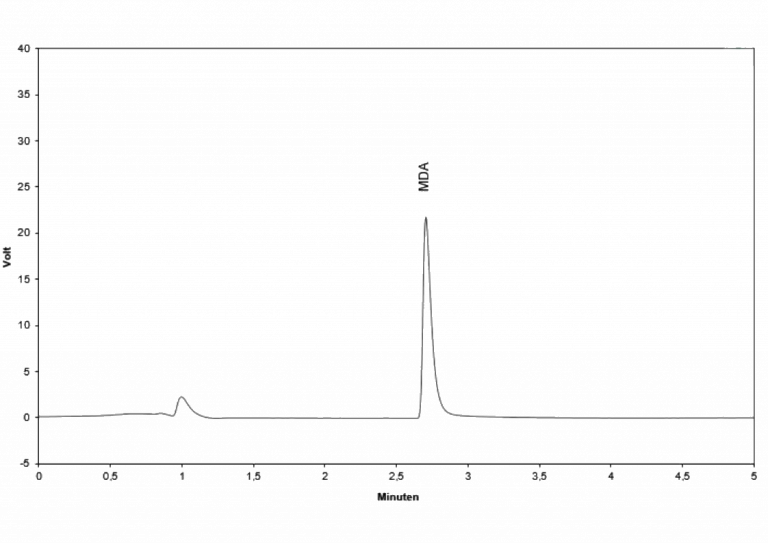Malondialdehyde
In a healthy body oxidative and reductive processes are in a balance. Free radicals (reactive oxygen species) are eliminated by antioxidants. In case of a lack of antioxidants free radicals react with cell structures. A reaction with unsaturated fatty acids lead to lipid peroxidation products. Reacting with poly-unsaturated fatty acids generates malondialdehyde and/or 4-hydroxynonenal. These secondary lipid peroxidation products might react with other molecules in the cell. A modification of the DNA-bases adenin or guanin result in wrong transcripts. A reaction with proteins lead to a alteration or loss of function. The creation of neoantigens is possible. Neoantigens are recognized by the immune system, thus resulting in autoimmune diseases. The participation of lipid peroxidation products are discussed in several diseases, as atherosclerosis, tumor genesis, rheumatism and reperfusion injury after transplantation.
Technical data
Sample EDTA-plasma, serum
Sample volume 20 µl
Detector Fluorescence Ex. 515 nm Em. 553 nm
Method isocratic
Determinations 100
Ordering Information
IC1900 Testkit
IC1900ko Controls (2 level each 250 µl lyoph.)
IC1900rp HPLC column

Principle of the method
For the determination of malondialdehyde a derivatisation step, in which protein bound malondialdehyde is hydrolysed and converted into a fluorescent probe (60 min at 95 °C) is performed. The fluorescent probe is then cooled (2-8°C), centrifuged, mixed with a reaction solution and injected into the HPLC system.
The isocratic separation via HPLC at 30°C, using a „reversed phase“ column, lasts 4 minutes for one sample. The chromatograms are recorded by a fluorescence detector. The quantification is performed with the delivered calibrator; the concentration is calculated via integration of the peak heights.